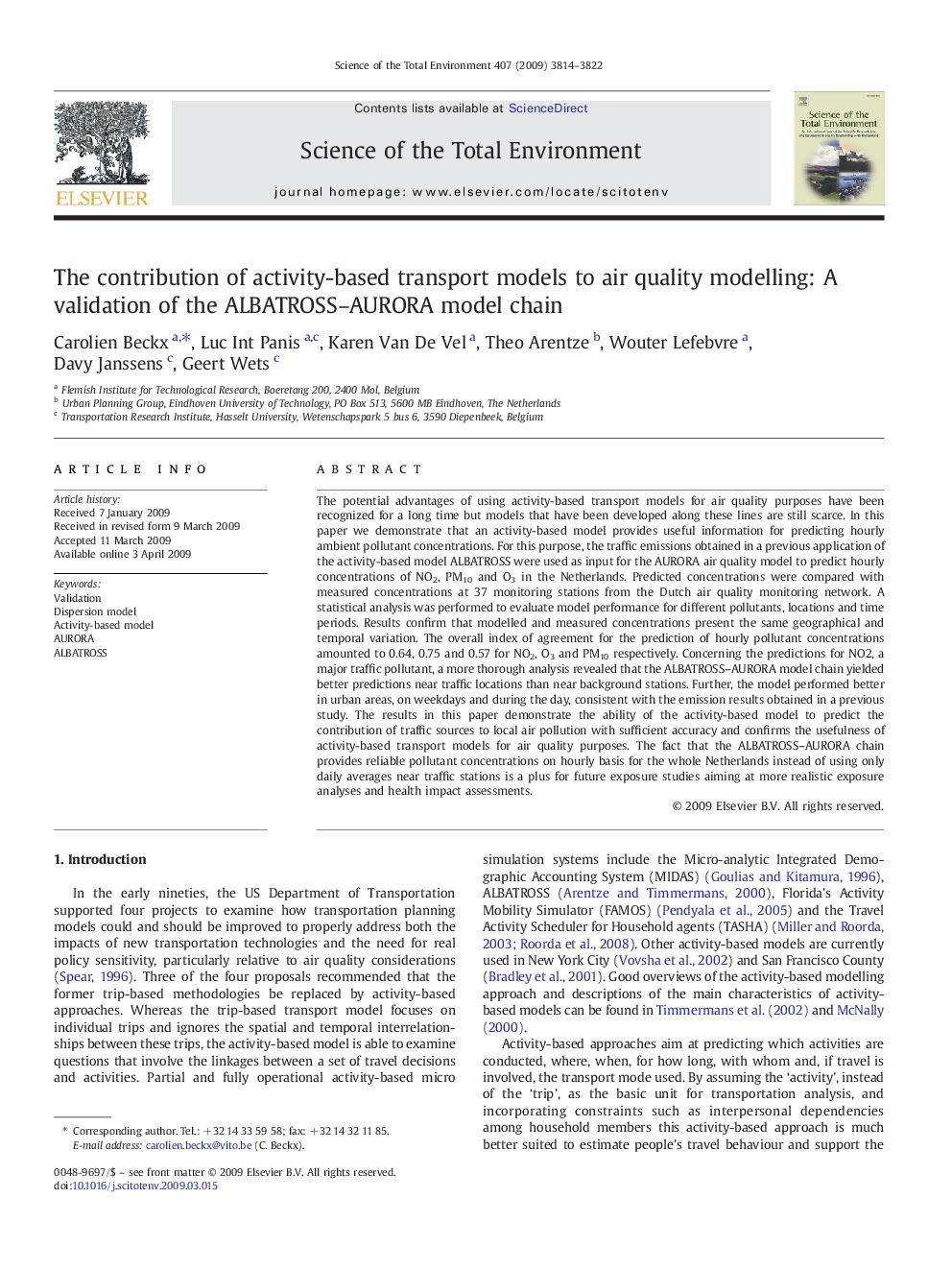| Article ID | Journal | Published Year | Pages | File Type |
|---|---|---|---|---|
| 4431828 | Science of The Total Environment | 2009 | 9 Pages |
The potential advantages of using activity-based transport models for air quality purposes have been recognized for a long time but models that have been developed along these lines are still scarce. In this paper we demonstrate that an activity-based model provides useful information for predicting hourly ambient pollutant concentrations. For this purpose, the traffic emissions obtained in a previous application of the activity-based model ALBATROSS were used as input for the AURORA air quality model to predict hourly concentrations of NO2, PM10 and O3 in the Netherlands. Predicted concentrations were compared with measured concentrations at 37 monitoring stations from the Dutch air quality monitoring network. A statistical analysis was performed to evaluate model performance for different pollutants, locations and time periods. Results confirm that modelled and measured concentrations present the same geographical and temporal variation. The overall index of agreement for the prediction of hourly pollutant concentrations amounted to 0.64, 0.75 and 0.57 for NO2, O3 and PM10 respectively. Concerning the predictions for NO2, a major traffic pollutant, a more thorough analysis revealed that the ALBATROSS–AURORA model chain yielded better predictions near traffic locations than near background stations. Further, the model performed better in urban areas, on weekdays and during the day, consistent with the emission results obtained in a previous study. The results in this paper demonstrate the ability of the activity-based model to predict the contribution of traffic sources to local air pollution with sufficient accuracy and confirms the usefulness of activity-based transport models for air quality purposes. The fact that the ALBATROSS–AURORA chain provides reliable pollutant concentrations on hourly basis for the whole Netherlands instead of using only daily averages near traffic stations is a plus for future exposure studies aiming at more realistic exposure analyses and health impact assessments.
